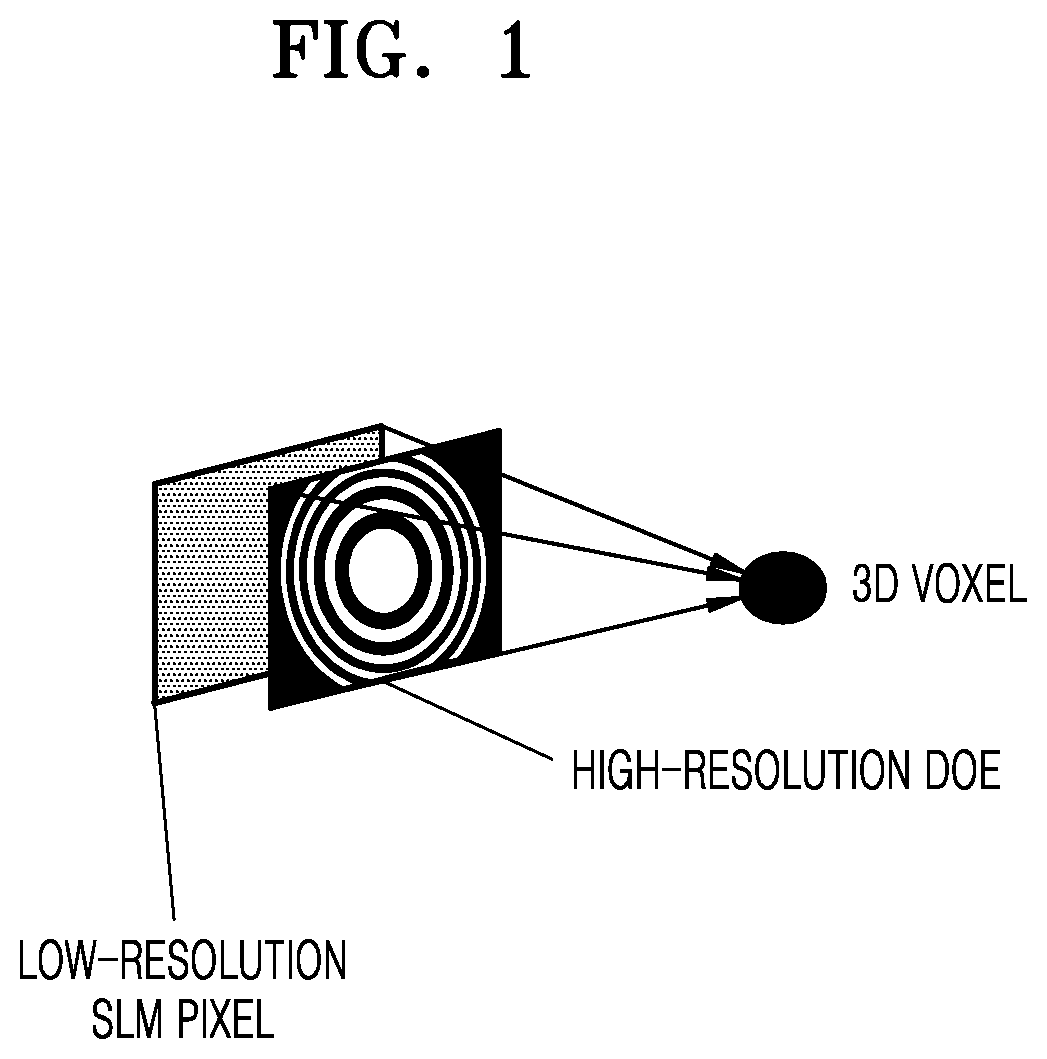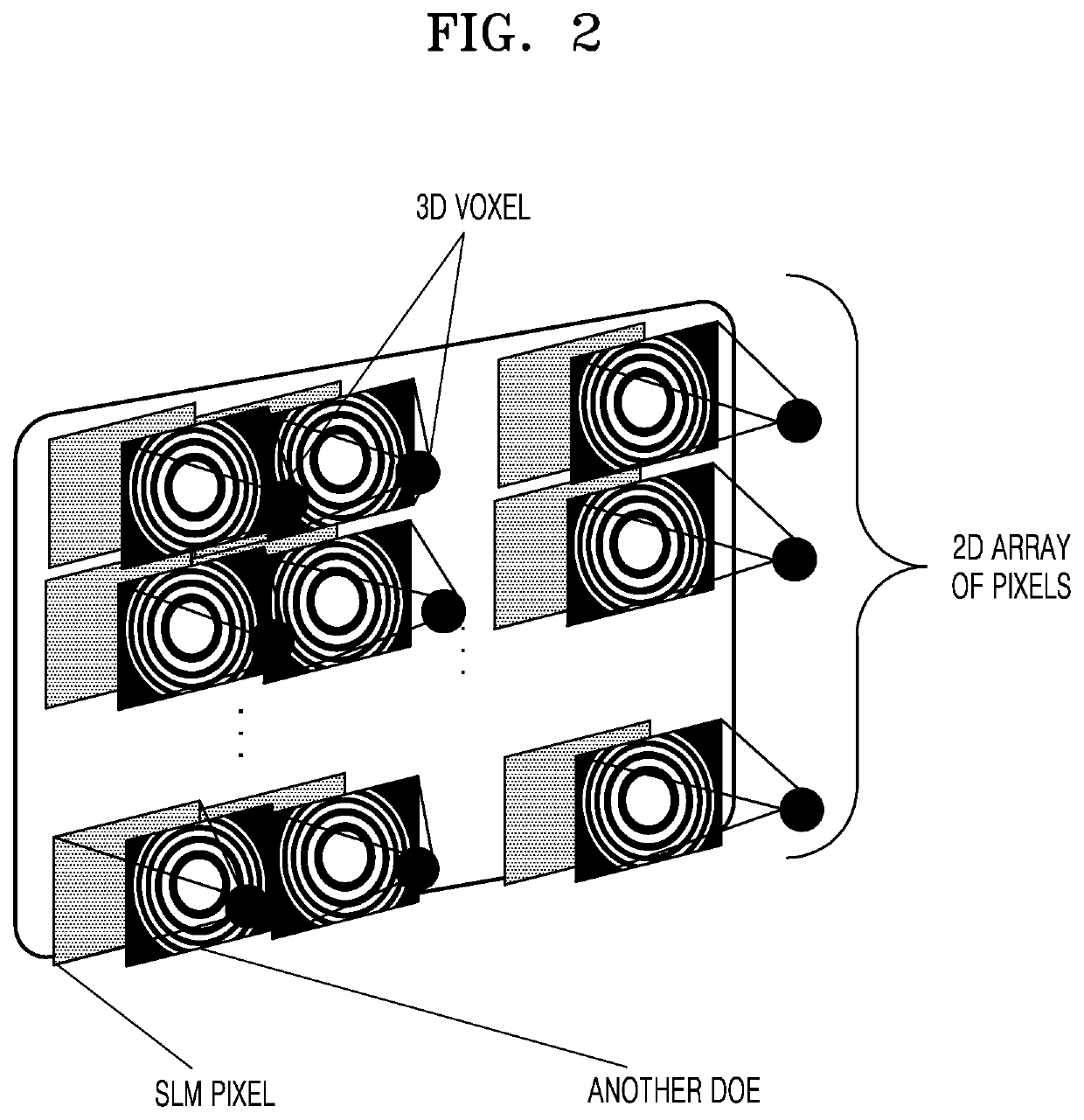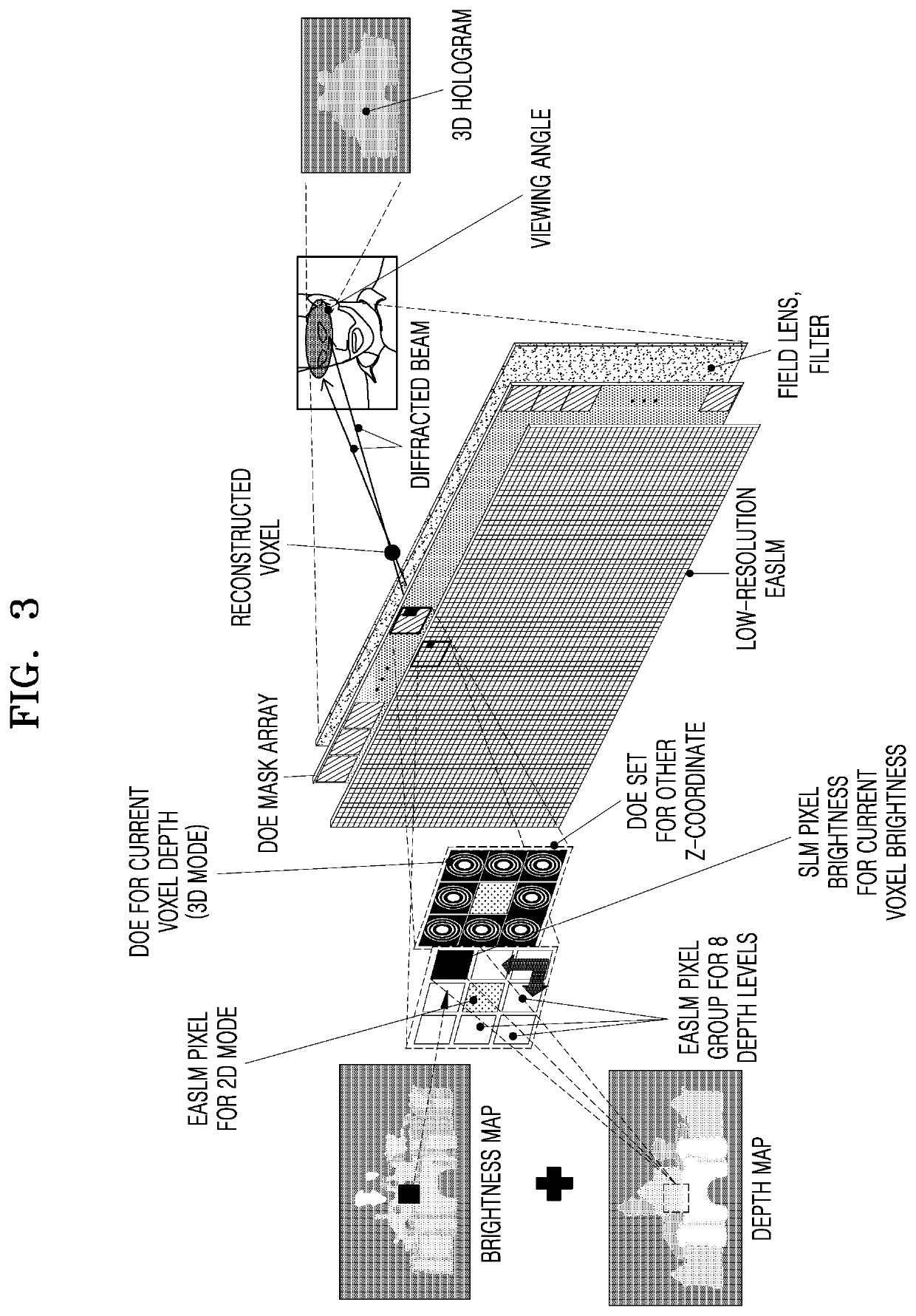Holographic display and holographic image forming method
a technology of holographic image and forming method, which is applied in the field of holographic display and holographic image forming method, can solve the problems of increasing the size of holographic image, holographic image almost impossible to be integrated into a wearable smart device, and reducing the computational load, so as to reduce the computational load, the effect of wide field and high resolution
- Summary
- Abstract
- Description
- Claims
- Application Information
AI Technical Summary
Benefits of technology
Problems solved by technology
Method used
Image
Examples
Embodiment Construction
Technical Problem
[0013]An example embodiment provides a compact holographic display.
[0014]An example embodiment provides a method, performed by a holographic display, of forming a holographic image.
Solution To Problem
[0015]According to an embodiment, a holographic display may include
[0016]an electrically addressable spatial light modulator (EASLM);
[0017]a diffractive optical element (DOE) mask array arranged on the EASLM; and
[0018]a controller configured to operate the holographic display to form a hologram image,
[0019]wherein the controller is further configured to address the EASLM to backlight the DOE mask array required to form a set of hologram image voxels by turning on a corresponding EASLM pixel.
[0020]The EASLM may be a non-coherent EASLM.
[0021]The holographic display may further include an optically addressable spatial light modulator (OASLM) and a backlight unit, and the EASLM, the DOE mask array, and the OASLM may be integrated into a single unit.
[0022]The OASLM may inclu...
PUM
| Property | Measurement | Unit |
|---|---|---|
| size | aaaaa | aaaaa |
| size | aaaaa | aaaaa |
| pixel size | aaaaa | aaaaa |
Abstract
Description
Claims
Application Information
 Login to View More
Login to View More - R&D
- Intellectual Property
- Life Sciences
- Materials
- Tech Scout
- Unparalleled Data Quality
- Higher Quality Content
- 60% Fewer Hallucinations
Browse by: Latest US Patents, China's latest patents, Technical Efficacy Thesaurus, Application Domain, Technology Topic, Popular Technical Reports.
© 2025 PatSnap. All rights reserved.Legal|Privacy policy|Modern Slavery Act Transparency Statement|Sitemap|About US| Contact US: help@patsnap.com



